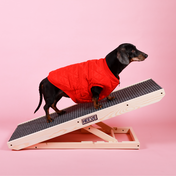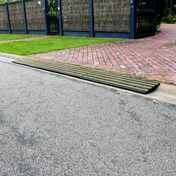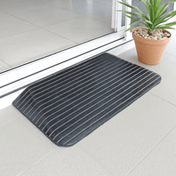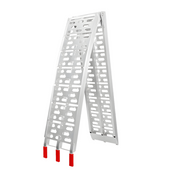Once a pupper, now a wise old soul.

As our dogs age, arthritis and joint pain become increasingly common. Maybe they’re jumping with a little less vigour, zooming a little less or opting for lazy afternoons on the couch instead of chasing the ball.
Whatever it may be, seeing our furry friends in pain is heartbreaking to watch. Yet it’s surprisingly common, with up to 1 in 5 dogs affected.
Knowing the signs of arthritis in dogs means we can better care for them, increasing their comfort, happiness and tail wags. And who wouldn’t want to do that?
Common Signs Of Arthritis In Dogs
Similar to humans, canine arthritis is an umbrella term for various types of joint pain or disease. While there are different forms of arthritis, it’s often accompanied by pain, stiffness, discomfort and swelling.

Degenerative arthritis is one of the most common forms, which is when the cartilage wears away, leading to friction and rubbing between bones.
So, let’s move to the common signs of canine arthritis, so you can give them the royal treatment they deserve.
Limping
Has your dog lost the spring in their step? Are they favouring one leg? Or are they hobbling more when they first rise in the morning? Keep your eye out for regular limping, it’s a common sign of arthritis that’s usually present in the morning, after exercise or in cold weather.
Irritability
If you were picked up and squeezed when your joints were sore, you’d get a little snarky, right? The same goes for our dogs. When they’re suffering from joint pain or arthritis, they may become more irritable and aggressive as a way to protect themselves. If that’s the case, go easy on them and respect their space.
Slowing down
Is your doggo unwilling to do things that once sent them into a fit of excitement? Do they opt for lazy days on the couch over a game of fetch? If the activities they once loved now cause them joint pain, they might slow down (and even become unphased by the W word).
Excess licking
Our dogs pay extra attention to their sore spots. If you find they’re licking, chewing or biting a particular area (even to the point of hair loss) this could be due to an injury or arthritis.
Other signs include changes in behaviour, tiredness, lethargy, difficulty getting up, accidents in the house and reluctance to move.
How To Help A Dog With Arthritis
A flat or hard surface is fine for a spritely pup, but as they grow older, they may need soft cushioning to protect their joints. Find an extra squishy bed like memory foam (bonus points if you let them sleep in your bed, there's zero judgement here).
Giving your dog regular exercise can limber up their joints and keep them mobile, while also shedding excess weight which can worsen their condition. But make sure the exercise is suited to their ability, without overdoing it. Walking them on a lead keeps them in control and prevents them from running off with the young pups (and regretting it later).
A healthy diet also contributes to a healthy weight, reducing stress on their sore joints. What’s more, anti-inflammatory foods like vegetables, lean protein and Omega 3 fatty acids can relieve their symptoms. You’ll find Omega 3 fatty acids in things like fish, green-lipped mussels and hemp seed oil.
Despite being in pain, your dog might still be jumping up to reach the car, couch or bed (can you blame them for wanting to lounge in their favourite places?) Over time, this jumping motion can take a toll on their joints.

Installing pet stairs or pet ramps is a simple way to protect their joints from unnecessary stress. They’re available in a range of sizes and lengths to suit any breed and space, with permanent and portable options.
Our tips to help a dog with arthritis are general in nature. And since every dog and condition is unique, we recommend chatting to your vet first to uncover ways to keep them happy and tail-waggingly comfortable.
At Ramp Champ, we’re a team of dog lovers dedicated to bringing the best dog ramps and stairs to market - all so your best friend can reach their favourite places with ease. They’re ideal for small dogs, senior dogs, dogs with arthritis (or basically any fur child that rules the house).
We sell thousands of pet ramps per year, and ship to any location across Australia (and we mean any - just try us). .
Discover whether dog stairs or ramps are better for your furry friend or shop our range today.
Resources:
https://www.vetmed.com.au/common-signs-arthritis-dogs/https://www.dogzone.com/articles/health/diseases/arthritis-in-dogs/https://www.greencrossvets.com.au/pet-library/articles-of-interest/arthritis-in-pets/https://www.livescience.com/20969-aggressive-dogs-hip-pain.html
Shop Dog Ramps




